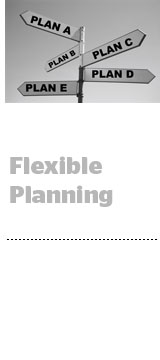
Agencies are adding new wrinkles to their media-planning processes to make sure campaigns are relevant and informed by expertise across many marketing disciplines.
“More timely, adaptive media plans for clients make it easier to respond to things that drive business results,” said Joe Maceda, head of Mindshare’s Invention Studio in North America.
And as holding companies break down silos, many are opening their media plans to input from people across agencies and networks through communication platforms that connect entire agencies and networks. In June, Publicis Groupe CEO Arthur Sadoun announced the group would not enter the Cannes Lions awards next year and invest the savings in building such a platform to connect its 80,000 employees.
Here’s how agencies are approaching media planning in an era of automation and connectivity.
Adaptable Planning
While the strategy behind a media plan can’t be fully automated (yet), agencies are using real-time data for better planning.
“There’s always a certain level of flex in a plan, particularly in digital where you can make optimizations,” said Sarah Stringer, director of strategy and innovation at Dentsu-owned Carat. “But moving money around is different than trying to target new interests or audiences.”
WPP’s Mindshare makes its plans more flexible by setting triggers that indicate the need for a change in strategy before a plan is deployed. A diaper brand, for example, can set alerts if news bubbles up around maternity leave policies or controversies around breastfeeding in public that the brand may or may not want to be associated with, Maceda said.
“It’s our method for generating opportunities for brands to intersect with cultural events,” he said. “We identify triggers in advance, plan our response and build mechanisms within our plans to rapidly deploy assets or media partnerships.”
Mindshare has called on a media partners already briefed on the brand’s image to quickly deploy a piece of native content around an event.
“Any debate that pops up may or may not be an opportunity,” Maceda said. “If we already built in the filters we need to apply, we would know whether we want to act.”
Publicis Groupe’s Zenith is also making its plans more adaptable to real-time data triggers, said global brand President Vittorio Bonori. As the agency expands its services around digital business transformation, media plans need to be able to adapt on the fly to remove barriers or find prospects along the customer journey.
Zenith’s ROI Plus platform enables employees to audit clients’ data and technology assets and design and execute their digital customer experiences. Planners can see the data at every stage of that process through the platform to quickly adapt their plans.
“Planners see data populating their map,” he said. “You need to deep dive into data to understand the opportunities.”
Crowd Pleasers
Media plans are also becoming more widely sourced as agencies build systems that connect their employees and encourage them to collaborate.
Omnicom’s PHD built a Tinder-like workflow platform that connects its 4,000 employees and lets planners post ideas that their peers can swipe through to like, dislike or comment on. The platform has 2,000 unique monthly users generating 600 ideas per day on average.
“It asks questions to steer [planners] to think about broader marketing and media issues,” said PHD’s worldwide planning and strategy director, Mark Holden. “We found that gamified collaboration that allows people to create ideas when they are outside the office works better than traditional brainstorms.”
The platform also lets planners visualize how to allocate spend across channels and over time. With this feature, PHD helped Unilever improve its ROI 20-40%, Holden said.
“Only once this is optimized am I interested in chatting innovation,” Holden said. “Because it is so basic, but so regularly missed.”
PHD’s system makes it easier to adapt global campaigns to local markets.
“Local countries can access the global campaign we agree on,” he said. “More time is spent working on innovation and thinking and less on creating presentation materials.”
Dentsu Aegis Network’s Idea Jam platform allows employees across its roughly 40,000-person network to collaborate on campaigns, access case studies and ask questions for complex problems, Stringer said.
“It’s a crowdsourcing tool for every day planning to pitch work,” she said.
For a large CPG client, Idea Jam helped Carat use Dentsu’s employee base as a consumer sample to gain insight on how people snack on road trips.
“The platform allows you to add to other people’s ideas to see if something is a bigger trend than one person in a silo coming up with an idea,” she said. “It’s a great way of hearing about people’s experiences and using it for a plan.”
This post was syndicated from Ad Exchanger.

More Stories
The Tobacco-Free Future of Phillip Morris With Marian Salzman
WBD Introduces Out-of-Home Member Plan as It Begins Max Password Crackdown
Deep Blue Is Building a Women’s Sports Yacht Club at Cannes